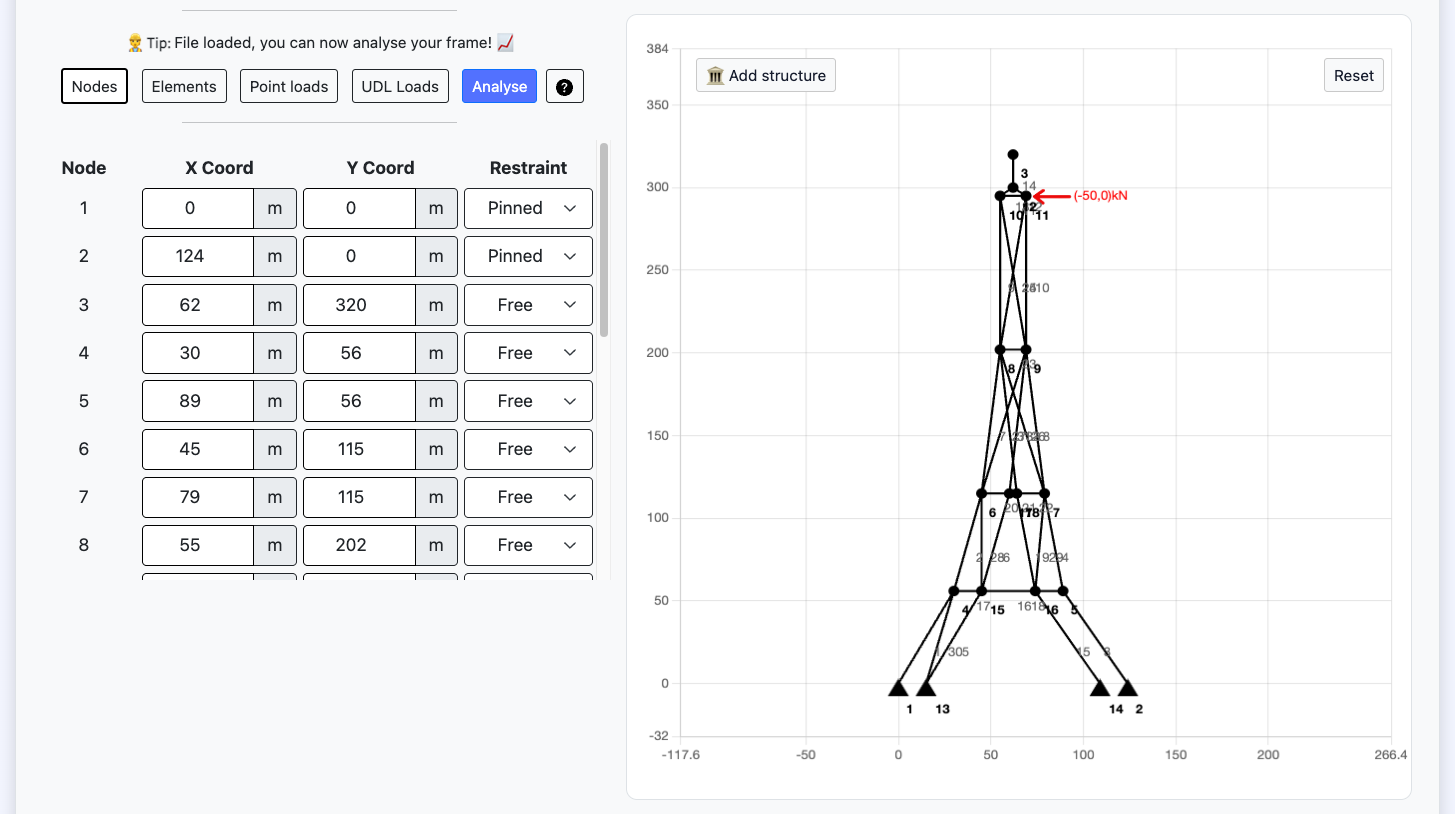Free Bearing Capacity Calculator
Check the soil bearing pressure of a building foundation or footing.
Result
Utilisation
Results summary
Loading...
| Design Load | |
| Design Resistance | |
| Utilisation | |
| Analysis Result | |
| Worst case analysis |
()
|
Advanced Settings
Variable load
kN
Enter a number between 0 and 8000.
If the foundation base is not flat:
Base inclination angle
°
Enter a number between 0 and 45.
If the load is not centred:
Load offset (length)
m
Enter a number greater than 0 & less than length.
Load offset (width)
m
Enter a number greater than 0 & less than width.
How do I design a footing foundation?
All structures require foundations to stand and these foundations resist the dead load (self-weight) of the structure and any applied live loadings. Foundations can be shallow or deep, an example of a shallow foundation is a simple footing. Loads acting on the structure follow the load path into the foundations where they are resolved into the ground. The foundation must rest of hard and stable strata and a bearing capacity calculation is required to substantiate the footing. Footings are usually constructed from reinforced concrete.
Bearing capacity is the maximum pressure a soil can support before failure. Geotechnical Engineers use their understanding of bearing capacity to design foundations to safely transfer loads (such as self-weight of the structure) from building foundations into the underlying soils.
What is ground bearing failure?
A building foundations transfers two types of force into the underlying soil via bearing pressure of the soil:
- Compressive stress: Generated from forces acting perpendicular to the orientation of the soil layers, compacting the soil and squeezing it together. Compressive failure occurs when the compressive stress is greater than the compressive strength of the soil.
- Shear stress: Shear stresses act along a plane around the perimeter of the foundation and shear failure occurs when the shear stress along this perimeter exceeds the shear strength of the soil.
How do I calculate bearing capacity of soil for building foundations?
Several different methods exists for the design of building foundations and calculating bearing capacity, one of the most widely used methods is the Terzaghi approach which uses numerical equations, the foundation dimensions, loading magnitude and geotechnical properties as inputs. The output of this calculation is a stress at which the soil fails under the compressive force of the foundation.
What is ground bearing failure?
A building foundations transfers two types of force into the underlying soil via bearing pressure of the soil:
- Compressive stress: Generated from forces acting perpendicular to the orientation of the soil layers, compacting the soil and squeezing it together. Compressive failure occurs when the compressive stress is greater than the compressive strength of the soil.
- Shear stress: Shear stresses act along a plane around the perimeter of the foundation and shear failure occurs when the shear stress along this perimeter exceeds the shear strength of the soil.
What are the bearing capacity failure modes?
There are three types of bearing capacity failure condition:
- Punching shear failure: This generally happens in loose sands, layers of strong soil underlaid by weak soil and in weak clays which are loaded slowly. Failure develops gradually in this setting due to the high compressibility of these soils. Little to no disturbance is seen at ground level during this failure mode but structures experience high levels of settlement.
- Local shear failure: This failure mode occurs in cohesionless soils and loose to medium dense soils. This method has a well defined shear surface which develops below the ground which may or may not be seen at the ground surface. Local shear failure happens gradually as the footing continues to experience settlement and movement along the shear plane.
- General shear failure: This failure mode typically occurs in dense cohesionless soils and undrained cohesive soils, general shear failure is characterised by a well defined shear plane with clear disturbances in the ground surface. This type of failure occurs suddenly and can cause significant roation of the structure.
How to calculate allowable soil bearing pressure?
Calculating the allowable ground bearing pressure beneath a foundation is possible using the Terzaghi bearing capacity factors:
The terzaghi general bearing capacity equation can be written as qf = cNcSc + yDNq + 0.5yBNySy
- Define the profile of the foundation: Define the width (B) of the foundation, its depth (D) and calculate the load intensity acting on the soil at the base of the foundation (qf) and additional overburden (yD).
- Define the failure zones: Terzaghi's equations only consider the general shear case and the three failure zones. The punching shear zone exists directly below the foundation. The radial shear zone exists from the edges of the foundation outwards. The linear shear zone is located outside the bounds of the radial shear zone.
- Calculate the Terzaghi shape factors: The terzaghi shape factors Sc and Sy can be straightforwardly calculated using the Terzaghi shape factor tables given below:
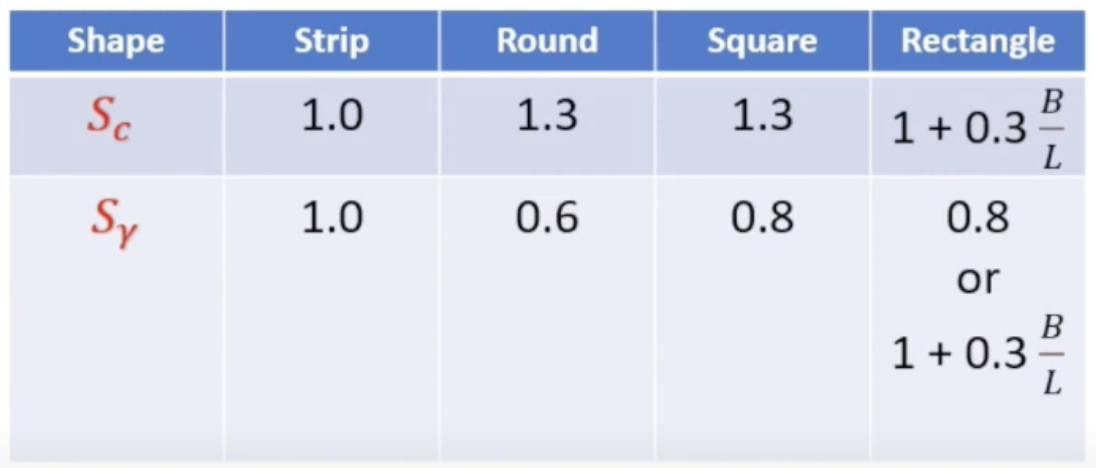
- Calculate the Terzaghi bearing capacity factors: The following table can be used to calculate the bearing capacity factors:
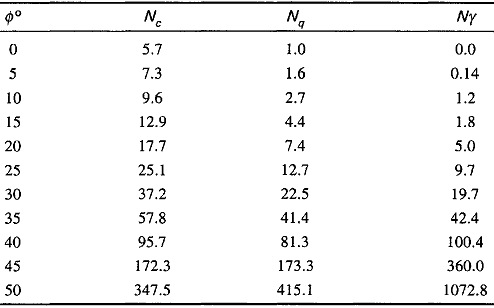
- Repeat the calculation: The calculation should be repeated for each soil layer beneath the foundation, considering the distribution of the load through the subgrade modulus or angle of friction to dissipate the load.
Allowable bearing pressure can be determined for both shallow and deep foundations using the Terzaghi bearing capacity equations.
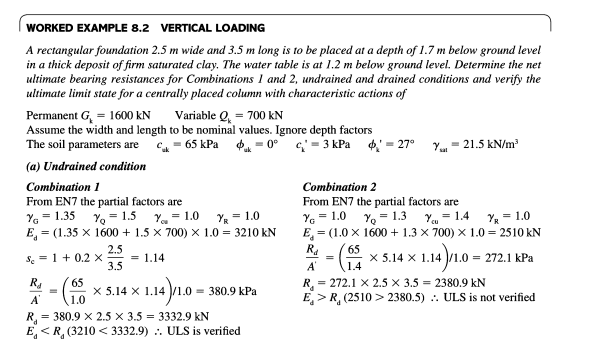
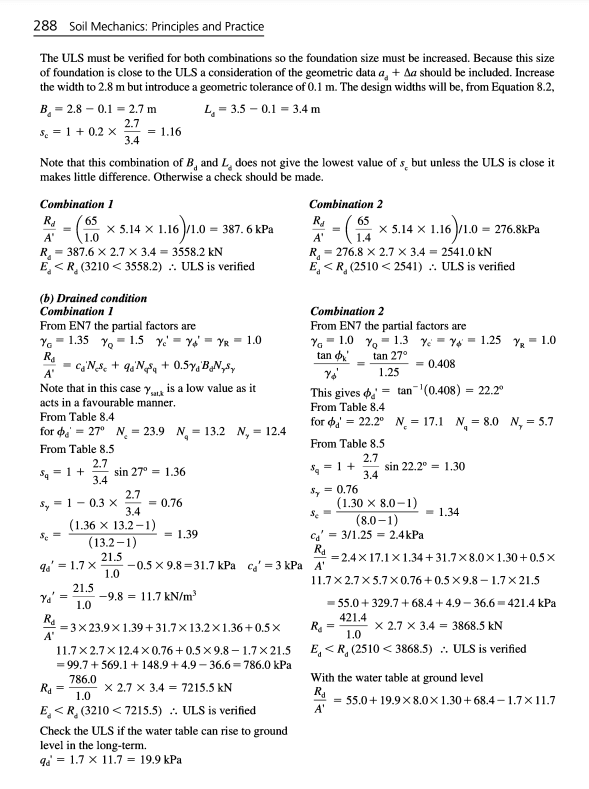
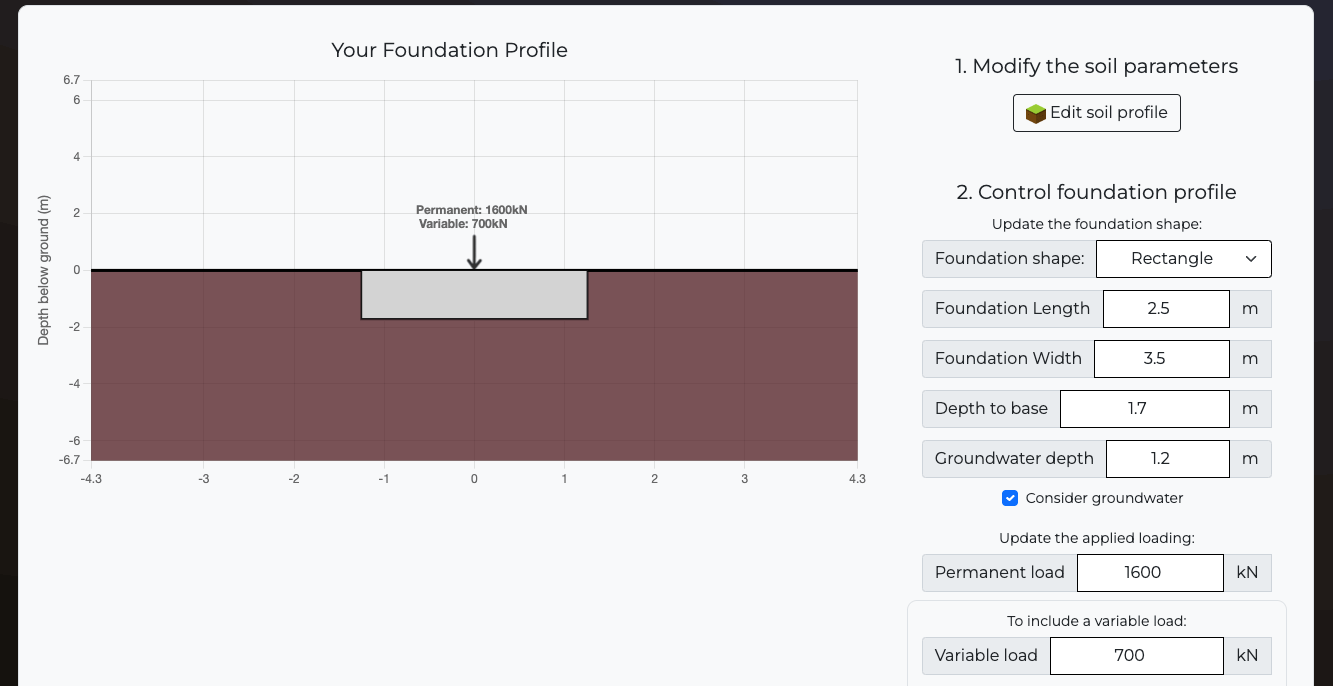

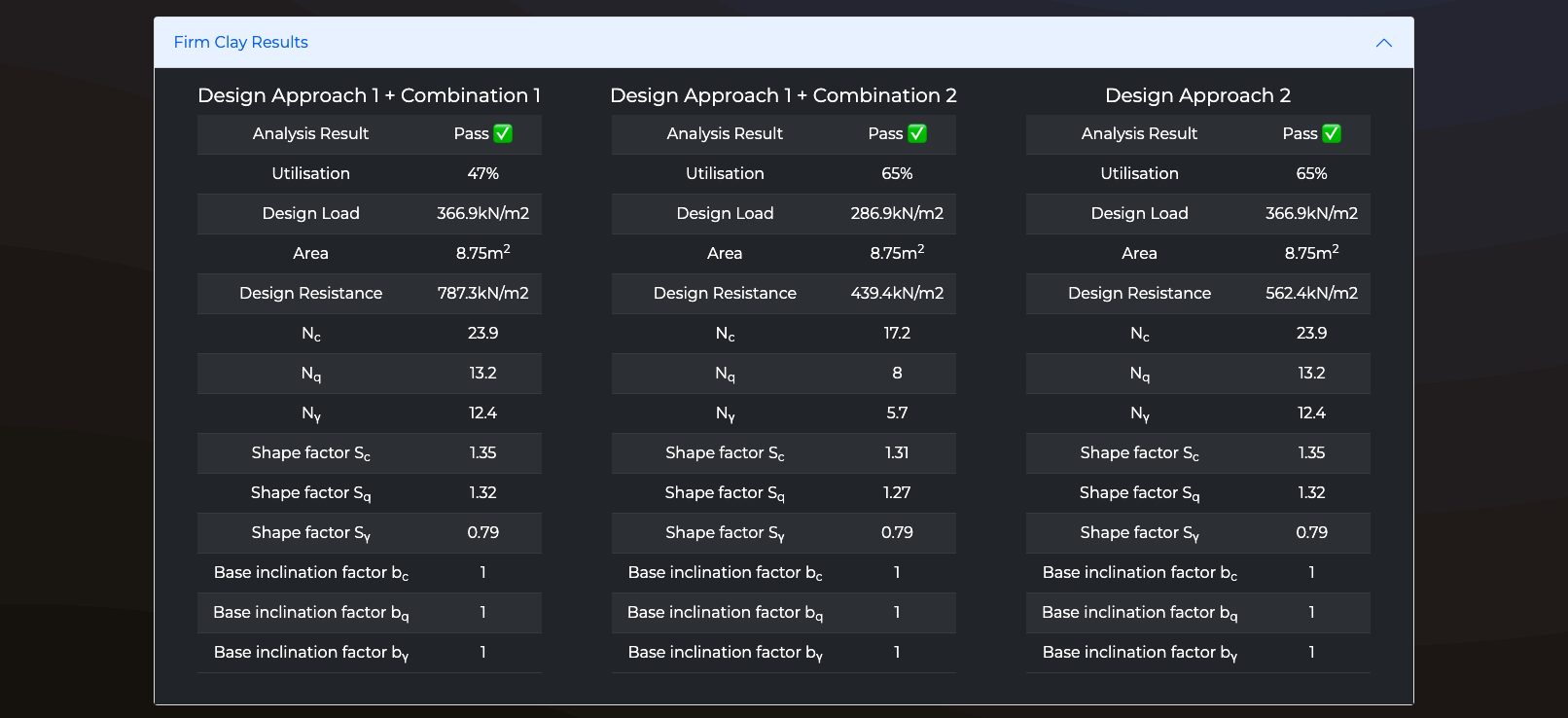

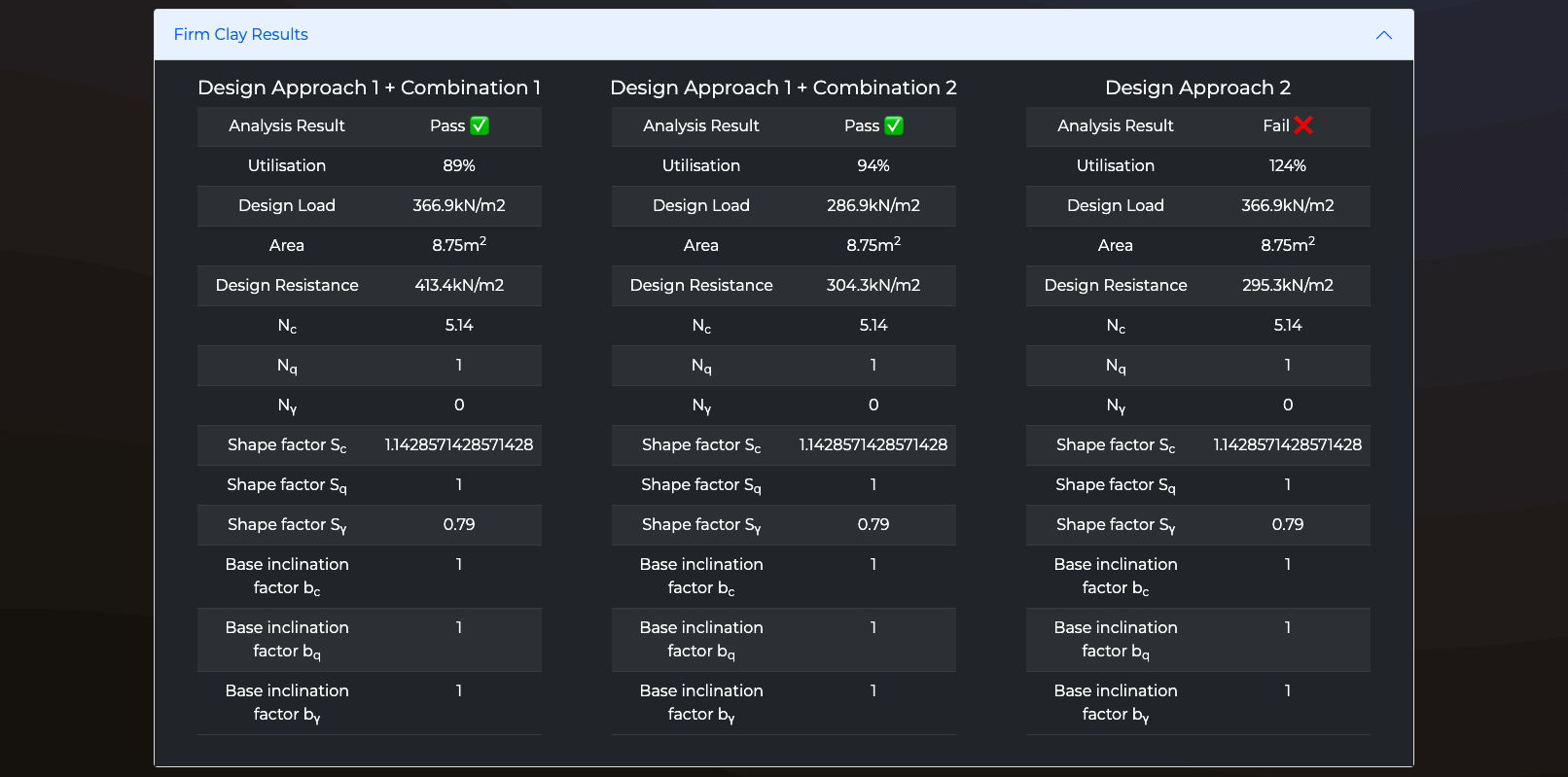
What's this calculator used for?
This free calculator helps Geotechnical Engineers check the bearing capacity of soil using the Terzaghi bearing capacity equations in accordance with the European construction reguations (Eurocode 7).
Bearing capacity is one of the fundamental calculation required for safe design building foundation and footing design. It considers load transfer into the ground (sometimes referred to as subgrade) by using empirical shape factors.
Use this free bearing capacity software for drainaged and undrained analysis of building foundations to check the maximum bearing pressure the soil can sustain in permanent and temporary anlysis.
Interested in learning more about automation?

Enroll on our training certifications and learn how to code, build AI applications with no-code tools and automate tasks.

